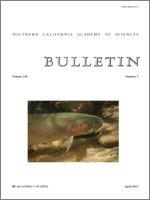The germination of seed is critical in deserts where annual plants are abundant and rely on seed buried in the soil for sustaining populations. The exotic annuals Bromus rubens and Brassica tournefortii threaten arid indigenous ecosystems such as the Mojave Desert, but little is known about the potential effects on seed emergence of different burial depths and substrates that could enhance or reduce emergence. Using seed from Mojave Desert populations, we conducted a three-factor greenhouse experiment testing the effects of species (Bromus or Brassica), burial depth (0, 2, 5, or 10 cm), and substrate (none, gravel, or litter) on seed emergence. Species and substrate interacted significantly with burial depth. Both species displayed the greatest emergence when seeds were sown on the soil surface (70% emergence for Bromus and 52% for Brassica), but Bromus emergence declined less at a 2-cm depth than Brassica. Emergence of surface-sown seed did not differ significantly among substrate types, but emergence of buried seed was significantly reduced below gravel substrates compared to no substrate or litter substrates. This suggests that seed fates in the soil (such as seed mortality by germination but not emergence from the soil) can be altered by manipulating soil surface conditions.
BioOne.org will be down briefly for maintenance on 12 February 2025 between 18:00-21:00 Pacific Time US. We apologize for any inconvenience.
Home
>
Journals
>
Bulletin, Southern California Academy of Sciences
>
Volume 110
>
Issue 1
>
Article
How to translate text using browser tools
1 April 2011
Effects of Burial Depth and Substrate on the Emergence of Bromus rubens and Brassica tournefortii
Scott R. Abella,
Amber C. Lee,
Alexis A. Suazo
ACCESS THE FULL ARTICLE






